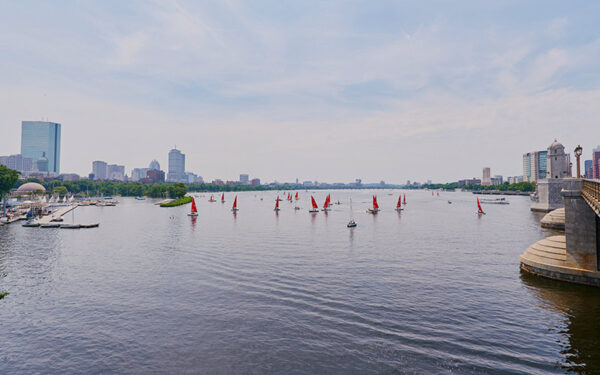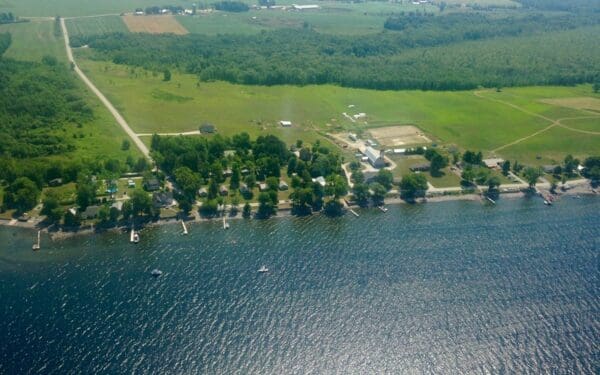
Stopping Nutrient Pollution from Laying Waste to our Waterways
The sight is commonplace these days: bright blue-green algae bloom scums on the surface of lakes or lapping against beaches, bringing with them foul odors, dire warnings against swimming, and shorelines strewn with rotting fish. Devastating as they are, these blooms are the symptom of a larger and more ominous problem as some of our most iconic waterscapes – Cape Cod, Great Bay, Lake Champlain, and Narragansett Bay – are slowly being choked by nutrient pollution.
Nutrient pollution is caused by excess nitrogen or phosphorus in the water – traced to fertilizer runoff from agriculture and lawns, animal waste from factory farms, and improperly treated or overflowing sewage. As algae feeds on this glut of nutrients, it grows rapidly, devouring oxygen and making the water uninhabitable for other species. Such pollution closes beaches, destroys habitat, taints drinking water, and causes fish and shellfish kills where thousands can die at once. Ultimately, this pollution can create massive “dead zones” empty of any living thing. Dead zones already beset parts of Narragansett Bay and Long Island Sound, and they’re growing.
The EPA has been slow to establish controls on nutrient pollution to maintain the water quality dictated by the federal Clean Water Act. Without adequate limits, polluters have little motivation to fix the problem. CLF is leading the fight against this growing, but controllable, threat to clean water, and pushing for strict controls on the sources and stronger enforcement of the law.
On Cape Cod, CLF is challenging EPA regulators for failing to require Clean Water Act permits for septic systems, which are fouling the Cape’s precious bays with unchecked discharges of nitrogen pollution. In New Hampshire, CLF is pushing for advanced pollution controls at wastewater treatment plants where discharges of nutrient-laden wastewater into the Great Bay estuary threaten the entire watershed.
In Lake Champlain, CLF has focused on changing the math by which water health is calculated. The EPA is now requiring the state to develop enforceable limits to pollution aimed at finally cleaning up the ailing lake, which has been in decline for decades.
Addressing this solvable problem requires good science-based planning, financial investment, individual commitment, and political will. CLF is working to ensure strong protections so that the choice for communities is not one of for clean water or against, but rather how to act quickly and cost-effectively to preserve this most fundamental source of health and prosperity.



